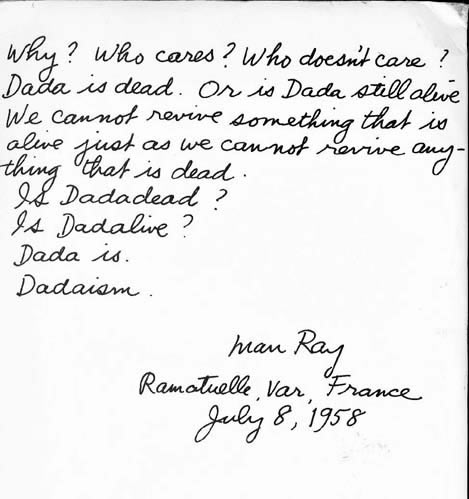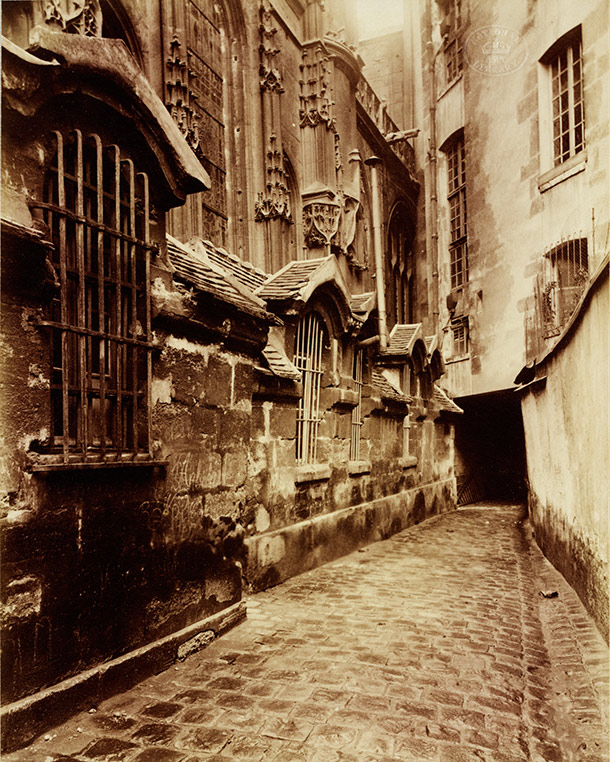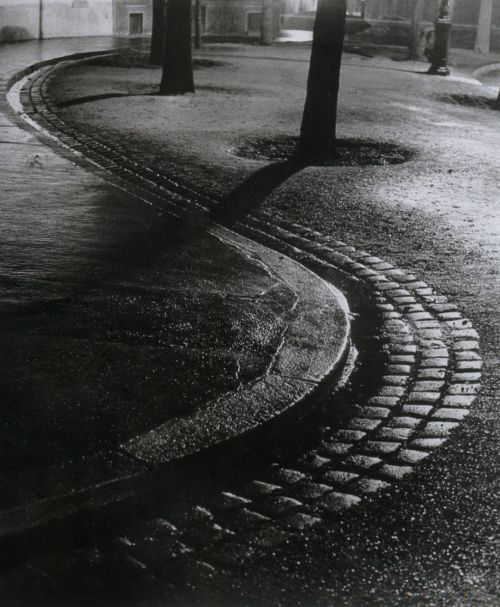Andre Kertesz - American
photographer, born Hungary (1894-1985)
Due to his unorthodox angles and unconventional approach to photography, it took time for Kertesz to become recognised a serious photographer. He was particularly fascinated by common subjects presented (posed) in such a way as to focus on an element of their unusual shape - he took countless images of figures distorted in different ways - water, reflections in mirrors or metal; manipulation of the negative. Interestingly and considering how much emphasis we place on entitling our photographs today, the vast majority of Kertesz images have no title.
 |
| Image by Andre Kertesz Martinique, 1st January 1972 |
Man Ray - (real name Emmanuel Radnitzky) American artist, born Philadelphia but lived most of his life in Paris (1890-1976)
Man Ray understood the creative power of photography and pushed it to its limits (of the time). The very essence of its documentary credentials and thus its ability to capture reality, were the very elements of the medium that he exploited for his art - he was acutely aware of the "unreality contained in reality itself".
"Legendary Photography, painter, and maker of objects and films, Man Ray was on the most versatile and inventive artists of this century." From the Man Ray Trust official website home page:
 |
| Copyright The Man Ray Trust I think this note (and the thought process behind it) sums up Man Ray beautifully. |
 |
| Image by Man Ray La violin d'Ingres, 1924 |
Eugene Atget - French photographer and 'author' (1857–1927)
Atget is best know for his project to record 'Old Paris' that began around 1897 and continued until the 1920s. He was appalled by the modernisation that was sweeping across the city and 'destroying' the old building, the architecture and environment; as a result he made it his own personal mission to record the history of Paris before it was lost forever. However, Atget is admired less as a record photographer and more as a forerunner of Surrealism and of modern approaches to the art of photography. His urban scenes - featuring snatched glimpses, tangential perspectives, odd reflections and bizarre details - convey a distinctly modern experience of the city. The irony being that these 'modern' images are of a city that (in the main) no longer exists.
 |
| Eugène Atget, Church of St Gervais, Paris ~ 1903 © Victoria and Albert Museum, London |
George Brassai- French photographer, born Transylvania (1899-1984)
Brassai was no a fan of photography until he say the work of Andre Kertesz - his eyes were opened and he took up the medium with passion and obsession. When developing his portfolio of images for Paris by Night, he focused on the dark bistros and darker streets - the very nature of these images presented him with a problem - exposure versus time (blur). To overcome this Brassai's solution was simple, place the camera on a tripod, opened the shutter and fire a flashbulb. The resultant quality and feel of the images - primitive, harsh and direct; would become his very trade mark. It was, for Brassai, better: straighter, more merciless, more descriptive of fact and most importantly in keeping with his vision: "as straightforward as a hammer".
"There are two gifts which every man of images needs to be a true creator: a certain sensitivity to life and at the same time, the art which will enable him to capture that life in a certain specific way. I'm not talking about aesthetics..."
 |
| Brassai, Winding Stream, Paris 1932 © Victoria and Albert Museum, London |
Tony Ray-Jones - English photographer, born Somerset (1941-1972)
Between 1966 and 1969 he worked tirelessly to capture his vision of the English, their rituals and customs and to promote photography as an art form. Ray-Jones’ candid approach allowed his subjects and the real world to some extent do the work for him. He was a "film director" snatching selected moments from reality. Ray-Jones said: "Photography can be a mirror and reflect life as it is, but I also think that perhaps it is possible to walk like Alice, through a looking-glass, and find another kind of world with the camera."
 |
| Tony Ray-Jones, Blackpool 1968 © The National Media Museum, Bradford |
Website references:
Atget Photography.com
Victoria and Albert Museum
BBC News
No comments:
Post a Comment